Top 10 Banned Books
The new bookshelf in the library which sports caution tape and a sign that reads: “We Are Banned Books,” caught my attention immediately. I, like many avid readers, have come to find that there is something intriguing about banned books. Whether it is their forbidden nature, controversial themes, or candid content, something about them begs you to grab them off the shelf and take a look. So, without further ado, here are the top 10 most influential books banned from schools and libraries.
10. The Catcher in the Rye by J.D. Salinger
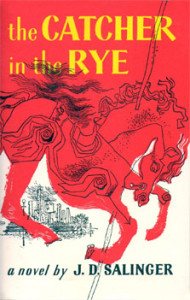 This classic “coming of age” novel, popular with teenagers and adults alike, has a history of controversy, especially among parents of impressionable teens. This book is an obvious choice for required reading lists at schools (Williston included). While on a journey of self-discovery in the heart of New York City, the main character encounters – to the horror of many parents – drinking, sex, violence, and foul language. One could argue that reading this book could encourage teens to act as the main character does, but one could also argue that a quick walk through the streets of almost any place in America would include all of these things and more. So, in order to protect our youth, should we also ban teenagers from going outside? It is also speculated by some that the book could be an assassination trigger. John Lennon’s killer read a passage out loud from the novel after he shot Lennon. The man who attempted to assassinate Reagan also had a copy of the book on his coffee table at home. Some don’t believe that this could’ve been mere coincidence and that there may be a secretly sinister aspect to the book.
This classic “coming of age” novel, popular with teenagers and adults alike, has a history of controversy, especially among parents of impressionable teens. This book is an obvious choice for required reading lists at schools (Williston included). While on a journey of self-discovery in the heart of New York City, the main character encounters – to the horror of many parents – drinking, sex, violence, and foul language. One could argue that reading this book could encourage teens to act as the main character does, but one could also argue that a quick walk through the streets of almost any place in America would include all of these things and more. So, in order to protect our youth, should we also ban teenagers from going outside? It is also speculated by some that the book could be an assassination trigger. John Lennon’s killer read a passage out loud from the novel after he shot Lennon. The man who attempted to assassinate Reagan also had a copy of the book on his coffee table at home. Some don’t believe that this could’ve been mere coincidence and that there may be a secretly sinister aspect to the book.
9. The Scarlet Letter by Nathaniel Hawthorne
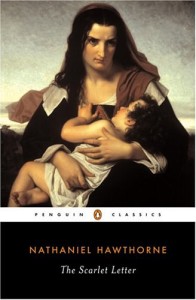 The Scarlet Letter’s racy subject, the punishment of Hester Prynne after she committed adultery in a Puritan society, has caused public outcry for centuries. Modern critics, one-hundred and forty years after the initial outcry, have named the book “obscene” and want it banned on sexual grounds, again in order to protect our youth. The odd part is, there are no sexual scenes or language whatsoever in the book. Without the main character’s baby, readers would never know she had had sex at all. The reader is with Hester while she is lonely, shunned, and in a state of perpetual self-torture all because she sinned. If that makes teenagers want to misbehave, then, honestly, they are hopeless.
The Scarlet Letter’s racy subject, the punishment of Hester Prynne after she committed adultery in a Puritan society, has caused public outcry for centuries. Modern critics, one-hundred and forty years after the initial outcry, have named the book “obscene” and want it banned on sexual grounds, again in order to protect our youth. The odd part is, there are no sexual scenes or language whatsoever in the book. Without the main character’s baby, readers would never know she had had sex at all. The reader is with Hester while she is lonely, shunned, and in a state of perpetual self-torture all because she sinned. If that makes teenagers want to misbehave, then, honestly, they are hopeless.
8. To Kill a Mockingbird by Harper Lee
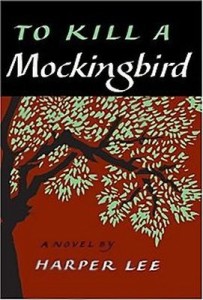 Like a lot of books on this list, To Kill a Mockingbird is considered a classic. But, of course, some have their objections to it. The novel targets the issue of injustice against blacks in the justice system during the 30’s, which is why it is strange that the main complaint against the book is that it is racist. The book uses the “n” word occasionally and is said to encourage stereotypes against black people. The book also discusses rape, which many deem inappropriate for children and teens to be reading about in school. But, because the book is based on a true story and the author grew up during this time, this appears to be another case where the truth is deemed too offensive to be shared.
Like a lot of books on this list, To Kill a Mockingbird is considered a classic. But, of course, some have their objections to it. The novel targets the issue of injustice against blacks in the justice system during the 30’s, which is why it is strange that the main complaint against the book is that it is racist. The book uses the “n” word occasionally and is said to encourage stereotypes against black people. The book also discusses rape, which many deem inappropriate for children and teens to be reading about in school. But, because the book is based on a true story and the author grew up during this time, this appears to be another case where the truth is deemed too offensive to be shared.
7. The Harry Potter series by J.K. Rowling
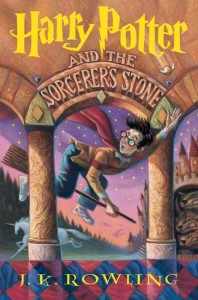 Yes, even the Harry Potter series, beloved by millions, has been banned before. Those against Harry Potter claim that it promotes witchcraft, teaches children to misbehave, and is too dark. Typical muggles. Christian groups actively protest the books in attempt to protect children from getting involved with witchcraft. There is no denying that the books include witchcraft, but as far as promoting it, the books don’t actually include any satanic references and any kid will immediately realize that it is unfortunately impossible to open doors by saying “alohomora.”
Yes, even the Harry Potter series, beloved by millions, has been banned before. Those against Harry Potter claim that it promotes witchcraft, teaches children to misbehave, and is too dark. Typical muggles. Christian groups actively protest the books in attempt to protect children from getting involved with witchcraft. There is no denying that the books include witchcraft, but as far as promoting it, the books don’t actually include any satanic references and any kid will immediately realize that it is unfortunately impossible to open doors by saying “alohomora.”
6. 1984 by George Orwell
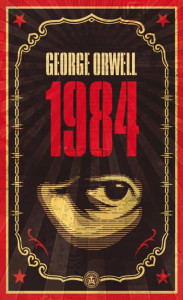 1984 is a dystopian novel describing a totalitarian society filled with suffering and misery. The book was understandably banned in the USSR because it belittled the government. That said, the book was also accused of being pro-Communist in the US (back in the days of McCarthyism). The accusers apparently missed the entire point of the book, as it is entirely devoted to condemning totalitarian, communist societies. Others want the book banned because it is too “bleak,” a weak argument against a dystopian novel.
1984 is a dystopian novel describing a totalitarian society filled with suffering and misery. The book was understandably banned in the USSR because it belittled the government. That said, the book was also accused of being pro-Communist in the US (back in the days of McCarthyism). The accusers apparently missed the entire point of the book, as it is entirely devoted to condemning totalitarian, communist societies. Others want the book banned because it is too “bleak,” a weak argument against a dystopian novel.
5. The Great Gatsby by F. Scott Fitzgerald
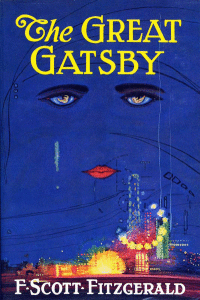 I was totally surprised to hear The Great Gatsby had been banned before, mostly because I can’t think of any controversial themes it discusses at all. The book was banned for its sexual references, drinking, and bad language. It does include these things, but in such a minimal way it would be ridiculous to get upset about. The main character has only been drunk two times in his life, the foul language is language most use in everyday speech (damn, hell), and the sex is merely implied and about as inexplicit as it could get. I guess offense can be found in any great work as long as you look closely enough.
I was totally surprised to hear The Great Gatsby had been banned before, mostly because I can’t think of any controversial themes it discusses at all. The book was banned for its sexual references, drinking, and bad language. It does include these things, but in such a minimal way it would be ridiculous to get upset about. The main character has only been drunk two times in his life, the foul language is language most use in everyday speech (damn, hell), and the sex is merely implied and about as inexplicit as it could get. I guess offense can be found in any great work as long as you look closely enough.
4. Fahrenheit 451 by Ray Bradbury
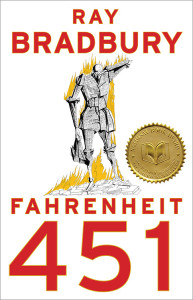 The banning of books often seems to be filled with irony, but no banning could possibly be more ironic than that of Fahrenheit 451. This book is literally about how terrible life would be in a world where books are burned and banned. Seriously? The book was banned for its “questionable themes” and foul language. But, many believe the real reason people find this book offensive is that it hits too close to home. As our lives become technology-filled, paper books and newspapers are dying out quickly. It is so easy to imagine our world becoming the world of Fahrenheit 451 that it becomes scary and uncomfortable to many readers.
The banning of books often seems to be filled with irony, but no banning could possibly be more ironic than that of Fahrenheit 451. This book is literally about how terrible life would be in a world where books are burned and banned. Seriously? The book was banned for its “questionable themes” and foul language. But, many believe the real reason people find this book offensive is that it hits too close to home. As our lives become technology-filled, paper books and newspapers are dying out quickly. It is so easy to imagine our world becoming the world of Fahrenheit 451 that it becomes scary and uncomfortable to many readers.
3. The Grapes of Wrath by John Steinbeck
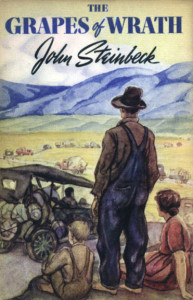 The Grapes of Wrath is about the lives of the poor during the great depression. The book is accused of exaggerating the condition of the poor, using vulgar language, and promoting socialism. The interesting part is that Steinbeck claims he dulled down the conditions of the poor because he felt if he represented it as bad as it truly was, it would be detrimental to his storyline. The Grapes of Wrath was instrumental in creating the “Library Bill of Rights,” a document that expresses the duty of librarians to share intellectual information and condemns censoring and banning.
The Grapes of Wrath is about the lives of the poor during the great depression. The book is accused of exaggerating the condition of the poor, using vulgar language, and promoting socialism. The interesting part is that Steinbeck claims he dulled down the conditions of the poor because he felt if he represented it as bad as it truly was, it would be detrimental to his storyline. The Grapes of Wrath was instrumental in creating the “Library Bill of Rights,” a document that expresses the duty of librarians to share intellectual information and condemns censoring and banning.
2. Huckleberry Finn by Mark Twain
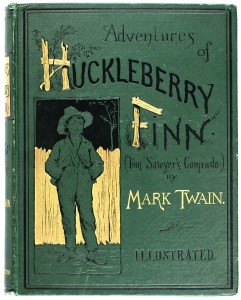 Huckleberry Finn is one of the most beloved books of all time, but people have been trying to censor and ban it since it was published. The book infamously says the “n” word over two-hundred times and is accused of racism by many. However, many argue that the excessive use of the “n” word is historically accurate for when the book was written. Huck Finn raises the big question of whether or not it significantly changes literature if offensive words are censored or changed.
Huckleberry Finn is one of the most beloved books of all time, but people have been trying to censor and ban it since it was published. The book infamously says the “n” word over two-hundred times and is accused of racism by many. However, many argue that the excessive use of the “n” word is historically accurate for when the book was written. Huck Finn raises the big question of whether or not it significantly changes literature if offensive words are censored or changed.
1. Uncle Tom’s Cabin by Harriet Beecher Stowe
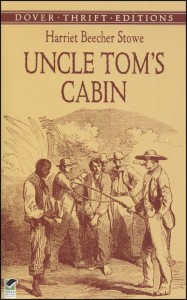 Abraham Lincoln famously told Harriet Beecher Stowe upon meeting her: “so this is the little lady who made this big war.” Uncle Tom’s Cabin is about the life of a black slave. The book was the second bestselling book (behind the Bible) during the 19th century. The vivid descriptions of slave life fueled the abolitionist movement. It was banned for its anti-slavery themes, mostly throughout the south. Stowe received countless threatening letters and on one horrible occasion, a slave’s severed ear. For displaying the truth so eloquently that it changed the history of the United States, Uncle Tom’s Cabin earns the crown of the number one banned book.
Abraham Lincoln famously told Harriet Beecher Stowe upon meeting her: “so this is the little lady who made this big war.” Uncle Tom’s Cabin is about the life of a black slave. The book was the second bestselling book (behind the Bible) during the 19th century. The vivid descriptions of slave life fueled the abolitionist movement. It was banned for its anti-slavery themes, mostly throughout the south. Stowe received countless threatening letters and on one horrible occasion, a slave’s severed ear. For displaying the truth so eloquently that it changed the history of the United States, Uncle Tom’s Cabin earns the crown of the number one banned book.
Bonus Round: Where’s Waldo by Martin Hanford
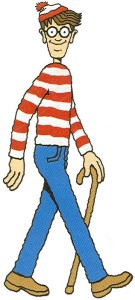 For much of the 90’s, Where’s Waldo, a wordless search and find book for children, was at the top of the ALA’s Top 100 Banned Books. Scenes filled with hundreds of tiny images apparently contained a topless sunbathing woman that angered consumers of the book. Considering how hard it is to find Waldo dressed in bright red and white stripes, whoever found this offense-worthy image (measuring only one-sixteenth of an inch) must have had way too much time on his or her hands.
For much of the 90’s, Where’s Waldo, a wordless search and find book for children, was at the top of the ALA’s Top 100 Banned Books. Scenes filled with hundreds of tiny images apparently contained a topless sunbathing woman that angered consumers of the book. Considering how hard it is to find Waldo dressed in bright red and white stripes, whoever found this offense-worthy image (measuring only one-sixteenth of an inch) must have had way too much time on his or her hands.


